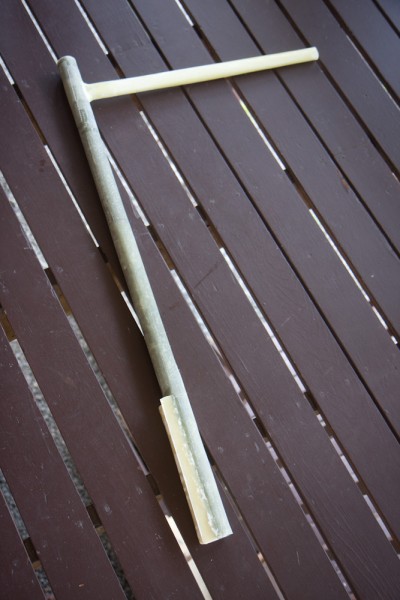Over the last couple of weeks I’ve played a bit with “software-defined radio”. By happenstance, I came across the website Flightradar24 which is a Swedish startup company that is building a global flight tracking network. Airplanes have transponders that reply to radar interrogation, and in the latest implementation called “ADS-B”, they are doing away with the radar entirely. Instead, aircraft transponders send their GPS position directly, so if you have a suitable receiver, you can track nearby airplanes. FR24 is leveraging this by having people host receivers for them, and in return they get a free subscription to their service.
The really cool thing is that over the past year or so, people figured out that tiny $20 USB dongles meant for receiving digital TV can actually be used as programmable receivers across an extremely wide frequency range, something like 25-1800MHz. In particular, they can be used to receive these aircraft transmissions at a frequency of 1090MHz.
This sounded too much fun to pass up, so I ordered a dongle, some coaxial cable, and made a simple dipole antenna with two wires. Amazingly, with this bare-minimum setup could track planes coming in from the mainland over 400km away! To make a more permanent installation, however, I needed to get an antenna up on the roof with free line of sight.
It’s not obvious how to mount things on our metal roof, and with the amount of rain we get here, you really don’t want to penetrate the roof. However, we have a couple of vent pipes from the sewage pipes poking up, so I figured I could attach something to them. However, they aren’t really meant to hold things, so I wanted the installation to be as light as possible.
I thought about attaching a 1″ PVC pipe and mounting the antenna to it, but PVC pipe is actually really heavy. Since I have plenty of epoxy and fiberglass lying around, I decided to make a short mast myself.

This is the short mast that I made. It’s made up of fiberglass around a foam pipe insulation core. The bottom bracket is for strapping it against the vent pipe.
The whole thing weighs barely a pound or two, much lighter and stiffer than the same length PVC pipe. While I was putting stuff up, I also wanted to make an antenna for the 2m amateur radio band. I’m a very inactive radio amateur, but putting up an antenna would at least make it possible to use the little handheld Yaesu FT51 radio I’ve owned for almost 20 years.
So, what kind of antenna to make? For the 1090MHz reception, I decided to make a 4-element Franklin antenna. This is a vertically stacked dipole with 4 elements, which amplifies signals near the horizon. This is the kind of pattern you want, since far away airplanes by definition are close to the horizon.
For the 2m band, antennas are getting big, so they have to be sturdy. I made a J-pole antenna out of 1/2″ copper water pipe.
There are descriptions for making these antennas for various bands online, but rather than rely on them, I ran some simulations myself using the EZNEC antenna simulator. Especially at 1090MHz, where the wavelength is about a 0.3m, small differences matter. While in principle the radiating sections should be a quarter wavelength long, a real antenna with conductors of finite thickness and with several wires coupling to each other will need to be tweaked slightly for optimal efficiency and impedance matching.
Here’s the final result mounted on the roof:
One additional complication was that the long coaxial cable needed to get the signal down from the roof to the receiver completely obliterated the signal. Even with expensive, low-loss coax, at 1GHz frequencies losses are substantial. Instead, people have successfully used in-line cable TV amplifiers mounted by the antenna and powered through the coax. These amplifiers are like $5 on ebay, so I got one of those and it works great. You can see it mounted on the horizontal bar in the picture above. The coax could conveniently be routed into the attic through the spaces at the roof ridge cover.
I still need to route the coax down from the attic to our server in the basement, but so far the reception has improved a bit compared to having the antenna in the window. I’m now picking up planes over 500km away. This is basically the radio horizon distance for planes at 30-40,000 ft, and since UHF propagation is pretty much line of sight, that’s about as good as it gets. Not bad for maybe $50 total invested!

Great that you have tweaked your J-Pole & Franklin on EZNEC. If it is ok with you, why not to publish dimensions of your antennas, so that other amateurs, not so gifted in technical know-how as you, can benefit from your valuable work.
Sure, I don’t mind. I’ll make a separate post about this when I get a chance.
Seen you detailed pages for J-Pole & Franklin. Very useful information. Thanks a lot
Pingback: More antenna business: The 1090MHz Franklin | Patrik's projects
Pingback: More antenna business: The 2m J-pole | Patrik's projects